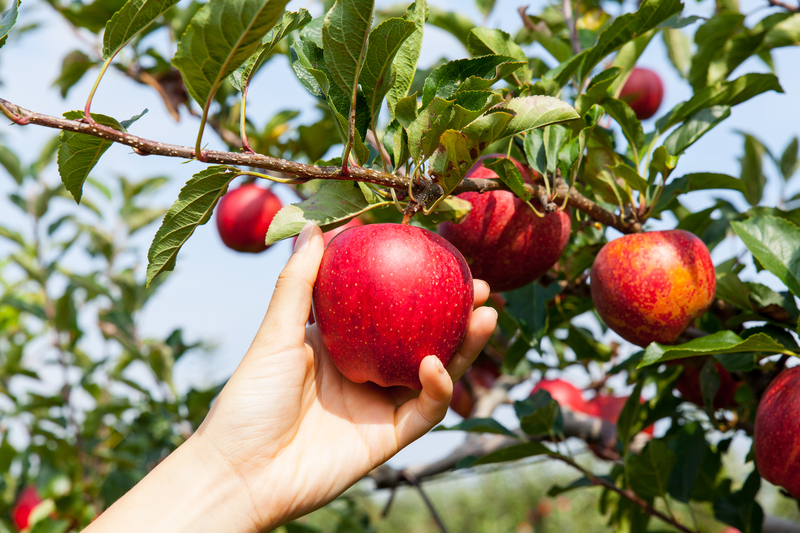Designing a Drought-Resistant Garden
Posted on 04/03/2025
In recent years, climate change has brought about more extreme weather patterns, including prolonged periods of drought. For gardeners, this can be particularly challenging. However, with a little planning and the right plant choices, you can create a beautiful, drought-resistant garden that thrives even under water restrictions. This article will guide you through the essentials of designing a drought-resistant garden, including plant selection, soil preparation, and watering techniques.
Understanding Drought-Resistance
Before diving into plant choices and garden layouts, it's essential to understand what drought-resistance entails. Drought-resistant plants are adapted to survive with minimal water. They have evolved various mechanisms to cope with dry conditions, such as deep root systems to access water stored deep in the soil, reduced leaf surface area to minimize water loss, and specialized storage tissues to retain moisture.

Choosing the Right Plants
Selecting the right plants is critical when designing a drought-resistant garden. Here are a few plant types and examples that are particularly well-suited for dry conditions:
1. Succulents
Succulents like cacti, aloe, and agave are excellent choices due to their water-storing capabilities. Their fleshy leaves, stems, or roots are designed to retain water, making them perfect for drought conditions.
2. Mediterranean Plants
Plants native to the Mediterranean region, such as lavender, rosemary, and sage, are well adapted to dry, hot summers and mild, wet winters. These plants are often used in drought-resistant gardening due to their hardiness and low water requirements.
3. Native Plants
Consider using plants that are native to your specific area. These plants are naturally adapted to the local climate and soil conditions, making them more resistant to drought. For instance, in the southwestern United States, plants like yucca and mesquite are ideal choices.
Soil Preparation
Proper soil preparation is essential for a drought-resistant garden. Poor soil can significantly hinder plant growth and water retention, making your plants more vulnerable during dry periods. Here are some tips for preparing your soil:
1. Improve Soil Structure
Adding organic matter such as compost or well-rotted manure can enhance soil structure and increase its ability to retain moisture. Organic matter helps soil particles clump together, creating pores that improve water infiltration and root growth.
2. Mulching
A thick layer of mulch can significantly reduce water evaporation from the soil surface. Organic mulches like wood chips, straw, or compost gradually decompose, adding nutrients to the soil and further improving water retention. Inorganic mulches like gravel or pebbles also work well by shading the soil and reducing evaporation.
3. Soil Testing
Conduct a soil test to determine its pH and nutrient levels. Adjusting pH and adding necessary nutrients can create an optimal growing environment, allowing drought-resistant plants to thrive.
Efficient Watering Techniques
Even drought-resistant gardens need some water, especially during the establishment phase. However, efficient watering techniques can help you use water wisely:
1. Drip Irrigation
Drip irrigation systems deliver water directly to the root zone, minimizing evaporation and runoff. This method ensures that water is used efficiently and reaches the plants that need it most.
2. Timing
Watering in the early morning or late evening reduces water loss due to evaporation. Avoid watering during the hottest part of the day when the sun is at its peak.
3. Deep Watering
Water deeply but less frequently to encourage plants to develop deep root systems. Shallow watering promotes shallow roots, making plants more susceptible to drought.
Xeriscaping Principles
Xeriscaping is a landscaping philosophy that focuses on water conservation. It involves using drought-resistant plants, efficient irrigation techniques, and thoughtful garden design. Here are some xeriscaping principles to consider:
1. Grouping Plants
Group plants with similar water needs together. This practice, known as hydrozoning, ensures that plants receive appropriate water amounts without over or underwatering.
2. Limiting Turf Areas
Lawns typically require more water than other types of vegetation. Consider reducing the size of your lawn or replacing it with drought-resistant ground covers like thyme or clover.
3. Hardscaping
Incorporate hardscaping elements such as patios, pathways, and rock gardens into your design. These features reduce the area that needs watering and maintenance.
Design Considerations
The aesthetic appeal of your garden doesn't have to suffer due to drought resistance. Here are some design tips to create an attractive, low-water garden:
1. Color and Texture
Use a variety of plants with different colors and textures to create visual interest. Silver or gray foliage often indicates drought tolerance and contrasts beautifully with green and flowering plants.
2. Focal Points
Include focal points such as sculptures, bird baths, or water features to draw attention and add interest to your garden.
3. Layering
Layer your planting beds by placing taller plants towards the back and shorter plants in the front. This creates depth and allows all plants to receive adequate sunlight.
4. Seasonal Interest
Choose plants that provide year-round interest. Some plants have vibrant blooms in the spring, while others offer colorful foliage in the fall or interesting textures in the winter.

Maintaining a Drought-Resistant Garden
Maintenance is crucial to ensure your garden remains drought-resistant. Here are some ongoing tasks to keep in mind:
1. Weeding
Weeds compete with your plants for water and nutrients. Regular weeding reduces competition and ensures that your drought-resistant plants thrive.
2. Pruning
Prune plants to remove dead or damaged growth, promote healthy new growth, and reduce water demand.
3. Monitoring
Keep an eye on your plants for signs of stress, such as wilting or discolored leaves. Address issues promptly to prevent long-term damage.
Conclusion
Designing a drought-resistant garden is a sustainable and rewarding approach to gardening in the face of changing climate conditions. By understanding the principles of drought resistance, choosing the right plants, improving soil quality, and employing efficient watering techniques, you can create a resilient garden that thrives with minimal water. Additionally, incorporating xeriscaping principles and thoughtful design considerations will not only conserve water but also enhance the beauty and functionality of your outdoor space. With careful planning and maintenance, your drought-resistant garden will be a sustainable oasis for years to come.



